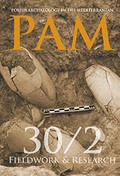Author(s): Zorislav Horvat / Language(s): Croatian
Issue: 1/2022
Slunj, the burg and the settlement, emerged during the second half of the 14th century. According to M. Bogović, there were two settlements, each with its own parish church. The main settlement, which is probably the oldest, was the one around the Church of St Mary Magdalene, in the position of today’s cemetery, and the other around the Church of All Saints, also called Trg. A Franciscan monastery with the Church of St Bernardine was built outside the settlement during the 15th century. Due to the Ottoman threat, both Slunj settlements were relocated to the area around the Franciscan monastery, and both parish churches were abandoned. At the same time, the Franciscan church was apparently remodelled as part of the fortifications around the new settlement. Today’s parish church was set on fire during the Homeland War, so the sanctuary of the old Franciscan church, built in the 16th century, appeared under the fallen plaster of the walls. It was a structure of modest design. The church was destroyed during an Ottoman raid in 1582 but was rebuilt at the beginning of the 18th century when it was expanded and given a baroque design. There are no preserved traces of the Churches of St Mary Magdalene and All Saints, only their approximate positions are known. At the end of the 17th and the beginning of the 18th century, frontier (Austrian and Italian) engineers drew the situation of Slunj, with floor plans and vedutas, on which the old churches of Slunj are shown. This documentation was drawn for the purposes of strengthening the border and defence against the Ottomans. The old parish Churches of St Mary Magdalene and All Saints are only indicated, whilst the centre of attention was the former Franciscan church, but only as part of the fortifications around Slunj. For both parish churches, it can be said that they were most likely constructed in the usual manner of parish churches in this part of Croatia: with a vaulted sanctuary, a flat-roofed nave and a bell tower on the western façade.
More...
















